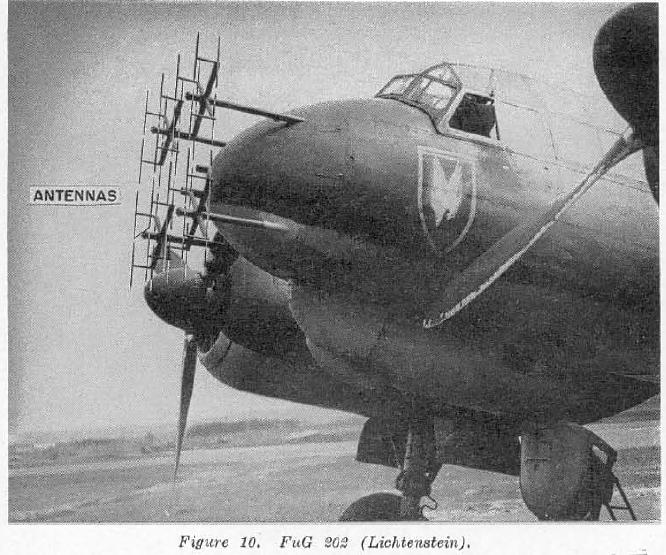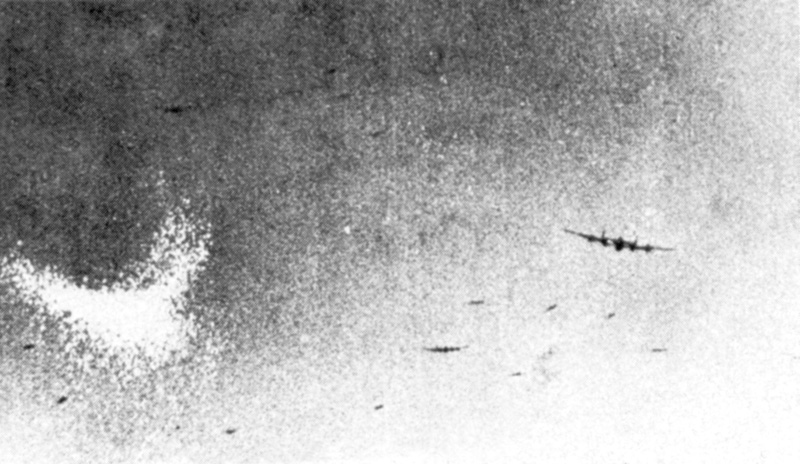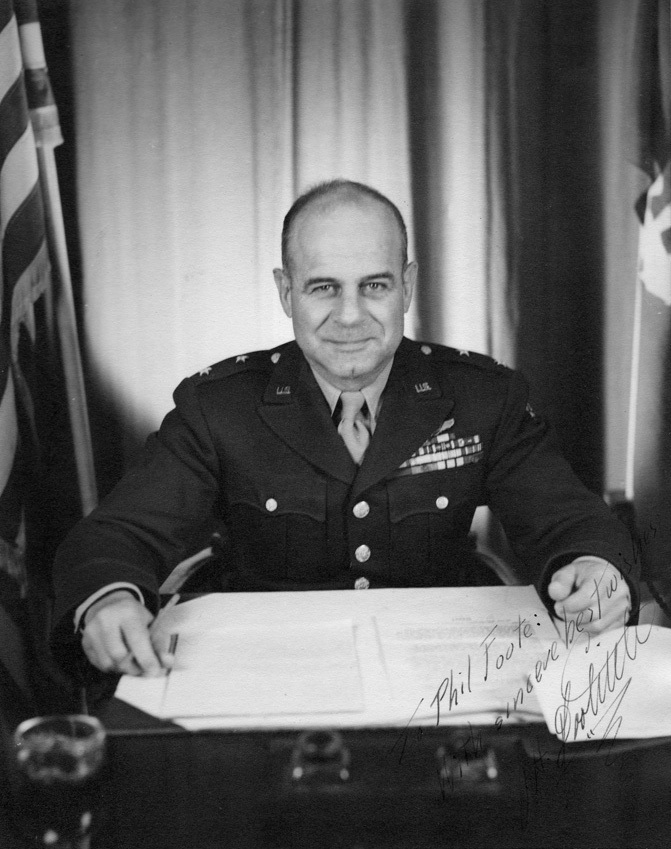|
Rudolf Schoenert
Rudolf Schoenert (27 July 1911 – 30 November 1985) was the seventh highest scoring night fighter flying ace in the German ''Luftwaffe'' during World War II. He was also a recipient of the Knight's Cross of the Iron Cross with Oak Leaves. The Knight's Cross of the Iron Cross and its higher grade Oak Leaves was awarded to recognise extreme battlefield bravery or successful military leadership. Early life and career Schoenert was born on 27 July 1911 in Glogau in the Province of Silesia, a province of the German Kingdom of Prussia, today it is Głogów in Poland. On 22 May 1933, he started flight training as a civil pilot with the ''Deutsche Verkehrsfliegerschule'' (German Air Transport School) in Braunschweig. From 4 December 1936 to 26 February 1937, he received his recruit training. On 1 April 1937, Schoenert started working as a civil flight instructor. World War II After five years in the Merchant Navy, Schoenert began flight training in 1933 and went on to fly commercial air ... [...More Info...] [...Related Items...] OR: [Wikipedia] [Google] [Baidu] |
Deutsche Verkehrsfliegerschule
The Deutsche Verkehrsfliegerschule (DVS), German Air Transport School, was a covert military-training organization operating as a flying school in Germany. It began during the Weimar Republic in Staaken, Berlin in 1925 and its head office was transferred in 1929 to Broitzem airfield near Braunschweig. The DVS was outwardly a flying school for commercial pilots, but in fact became a secret military arm training military aviators for the future Luftwaffe. This training facility grew in importance in the initial stages of Nazi Germany, while camouflaging as a harmless civilian organization (''Tarnorganisation''), at the time of Germany's rearmament in violation of the Versailles Treaty. On May 31, 1945, after Nazi Germany's defeat in World War II, the American Military Government issued a special law outlawing the Nazi Party and all of its branches. Known as "Law number five", this Denazification decree disbanded the ''Deutsche Verkehrsfliegschule'' and its facilities were taken o ... [...More Info...] [...Related Items...] OR: [Wikipedia] [Google] [Baidu] |
Lichtenstein Radar
The Lichtenstein radar was among the earliest airborne radars available to the Luftwaffe in World War II and the first one used exclusively for air interception. Developed by Telefunken, it was available in at least four major revisions, called FuG 202 Lichtenstein B/C, FuG 212 Lichtenstein C-1, FuG 220 Lichtenstein SN-2 and the very rarely used FuG 228 Lichtenstein SN-3. (FuG is short for ''Funk-Gerät'', radio set). The Lichtenstein series remained the only widely deployed airborne interception radar used by the Germans on their night fighters during the war — the competing FuG 216 through 218 ''Neptun'' mid- VHF band radar systems were meant as a potentially more versatile stop-gap system through 1944, until the microwave-based FuG 240 "Berlin" could be mass-produced; the ''Berlin'' system was still being tested when the war ended. FuG 202 Lichtenstein B/C Early FuG 202 Lichtenstein B/C units were not deployed until 1942. They operated at a maximum RF output power o ... [...More Info...] [...Related Items...] OR: [Wikipedia] [Google] [Baidu] |
Searchlight
A searchlight (or spotlight) is an apparatus that combines an extremely bright source (traditionally a carbon arc lamp) with a mirrored parabolic reflector to project a powerful beam of light of approximately parallel rays in a particular direction. It is usually constructed so that it can be swiveled about. Military use The first use of searchlights using carbon arc technology occurred during the Siege of Paris during the Franco-Prussian War. The Royal Navy used searchlights in 1882 to dazzle and prevent Egyptian forces from manning artillery batteries at Alexandria. Later that same year, the French and British forces landed troops under searchlights. By 1907 the value of searchlights had become widely recognized. One recent use was to assist attacks by torpedo boats by dazzling gun crews on the ships being attacked. Other uses included detecting enemy ships at greater distances, as signaling devices, and to assist landing parties. Searchlights were also used by battles ... [...More Info...] [...Related Items...] OR: [Wikipedia] [Google] [Baidu] |
Radar
Radar is a detection system that uses radio waves to determine the distance (''ranging''), angle, and radial velocity of objects relative to the site. It can be used to detect aircraft, ships, spacecraft, guided missiles, motor vehicles, weather formations, and terrain. A radar system consists of a transmitter producing electromagnetic waves in the radio or microwaves domain, a transmitting antenna, a receiving antenna (often the same antenna is used for transmitting and receiving) and a receiver and processor to determine properties of the objects. Radio waves (pulsed or continuous) from the transmitter reflect off the objects and return to the receiver, giving information about the objects' locations and speeds. Radar was developed secretly for military use by several countries in the period before and during World War II. A key development was the cavity magnetron in the United Kingdom, which allowed the creation of relatively small systems with sub-meter resolution. Th ... [...More Info...] [...Related Items...] OR: [Wikipedia] [Google] [Baidu] |
Kammhuber Line
The Kammhuber Line was the Allied name given to the German night air defense system established in July 1940 by Colonel Josef Kammhuber. It consisted of a series of control sectors equipped with radars and searchlights and an associated night fighter. Each sector would direct the night fighter into visual range with target bombers. The Line was very effective against early Bomber Command tactics. However, the German method was analyzed by the RAF and a counter measure developed. On the night of 30/31 May 1942 in its 1,000 plane raid against Cologne, Bomber Command introduced the use of the bomber stream. The concentration of bombers through a few of the boxes resulted in the defenses being overwhelmed. In response, the Germans converted their ground radar into a radar network, which would follow the path of the British bombers, while a controller directed the night fighters into the stream. Measure and counter measure continued until October 1944, when German defenses were no lo ... [...More Info...] [...Related Items...] OR: [Wikipedia] [Google] [Baidu] |
Air Defense
Anti-aircraft warfare, counter-air or air defence forces is the battlespace response to aerial warfare, defined by NATO as "all measures designed to nullify or reduce the effectiveness of hostile air action".AAP-6 It includes surface based, subsurface ( submarine launched), and air-based weapon systems, associated sensor systems, command and control arrangements, and passive measures (e.g. barrage balloons). It may be used to protect naval, ground, and air forces in any location. However, for most countries, the main effort has tended to be homeland defence. NATO refers to airborne air defence as counter-air and naval air defence as anti-aircraft warfare. Missile defence is an extension of air defence, as are initiatives to adapt air defence to the task of intercepting any projectile in flight. In some countries, such as Britain and Germany during the Second World War, the Soviet Union, and modern NATO and the United States, ground-based air defence and air defence aircraf ... [...More Info...] [...Related Items...] OR: [Wikipedia] [Google] [Baidu] |
Josef Kammhuber
Josef Kammhuber (August 19, 1896 – January 25, 1986) was a career officer in the Luftwaffe and post-World War II German Air Force. During World War II, he was the first general of night fighters in the Luftwaffe. Kammhuber created the night fighter defense system, the so-called Kammhuber Line, but the detailed knowledge of the system provided to the Royal Air Force by British military intelligence allowed them to render it ineffective. Personal battles between him and Erhard Milch, director of the Reich Air Ministry, led to his dismissal in 1943. After the war, he joined the Bundeswehr, the armed forces of West Germany. Career Josef Kammhuber was born in Tüßling, Bavaria, the son of a farmer. At the outbreak of World War I Kammhuber was 18 and joined a Bavarian engineer battalion. He participated in the Battle of Verdun in 1916 and was promoted to Second Lieutenant in 1917. He remained in Germany's post-war army, and in 1925 was promoted to First Lieutenant. Between Octobe ... [...More Info...] [...Related Items...] OR: [Wikipedia] [Google] [Baidu] |
Generalmajor
is the Germanic variant of major general, used in a number of Central and Northern European countries. Austria Belgium Denmark is the second lowest general officer rank in the Royal Danish Army and Royal Danish Air Force. As a two-star rank it is the equivalent to the rank of counter admiral in the Royal Danish Navy. The rank is rated OF-7 within NATO. It has the grade of M404 within the Ministry of Defence's pay structure. The rank of major general is reserved for the Chief of the army and air force. History On 25 May 1671, the ranks were codified, by King Christian V, with the publication of the Danish order of precedence. Here generals of the branch were placed below Lieutenant field marshal ( da, Feltmarskal Lieutenant), and above the noble rank of Count and the military rank of Lieutenant general. As part of the Army Reform of 1867, the ranks of Major, Lieutenant colonel were removed and only a single "General" rank was kept. After the 1880 reform, the gene ... [...More Info...] [...Related Items...] OR: [Wikipedia] [Google] [Baidu] |
Defence Of The Reich
The Defence of the Reich (german: Reichsverteidigung) is the name given to the military strategy, strategic defensive aerial campaign fought by the Luftwaffe of Nazi Germany over German-occupied Europe and Germany during World War II. Its aim was to prevent the destruction of German civilians, military and civil industries by the Allies of World War II, Western Allies. The day and night air battles over Germany during the war involved thousands of aircraft, units and aerial engagements to counter the Allied strategic bombing campaign. The campaign was one of the longest in the history of aerial warfare and with the Battle of the Atlantic and the Allied Blockade of Germany (1939–45), Blockade of Germany was the longest of the war. The Luftwaffe fighter force defended the airspace of German-occupied territory against attack, first by RAF Bomber Command and then against the United States Army Air Forces (USAAF) in the Combined Bomber Offensive. In the early years, the Luftwaffe w ... [...More Info...] [...Related Items...] OR: [Wikipedia] [Google] [Baidu] |
Royal Air Force
The Royal Air Force (RAF) is the United Kingdom's air and space force. It was formed towards the end of the First World War on 1 April 1918, becoming the first independent air force in the world, by regrouping the Royal Flying Corps (RFC) and the Royal Naval Air Service (RNAS). Following the Allied victory over the Central Powers in 1918, the RAF emerged as the largest air force in the world at the time. Since its formation, the RAF has taken a significant role in British military history. In particular, it played a large part in the Second World War where it fought its most famous campaign, the Battle of Britain. The RAF's mission is to support the objectives of the British Ministry of Defence (MOD), which are to "provide the capabilities needed to ensure the security and defence of the United Kingdom and overseas territories, including against terrorism; to support the Government's foreign policy objectives particularly in promoting international peace and security". The R ... [...More Info...] [...Related Items...] OR: [Wikipedia] [Google] [Baidu] |
Battle Of The Heligoland Bight (1939)
The Battle of the Heligoland Bight was the first "named" air battle of the Second World War, which began the longest air campaign of the war, the Defence of the Reich. On 3 September 1939, the United Kingdom declared war on Nazi Germany after the German invasion of Poland, which started the European War. The British did not assist Poland by land or sea but RAF Bomber Command flew several missions against German targets. A number of these air raids were directed at ''Kriegsmarine'' (German Navy) warships in German ports to prevent their use in the Battle of the Atlantic. With the front lines static between September 1939 and May 1940, a period known as the "Phoney War" set in, with little fighting on land or in the air. At sea, German U-boat (submarine) forces were taking a considerable toll on Allied shipping. The Air Ministry decided to launch an attack on German surface ships to prevent them supporting the U-boats in the North Atlantic. On 18 December 1939, a force of three ... [...More Info...] [...Related Items...] OR: [Wikipedia] [Google] [Baidu] |






